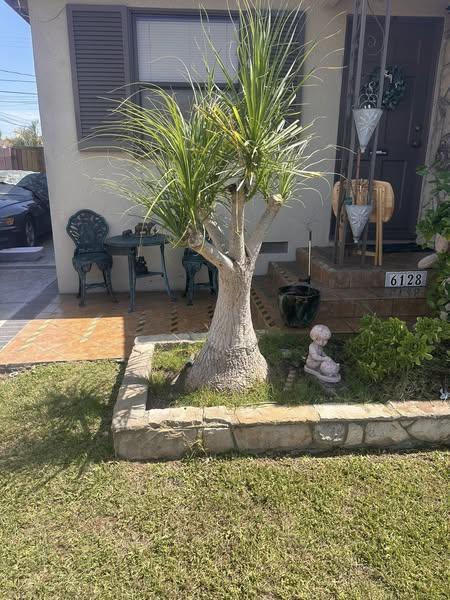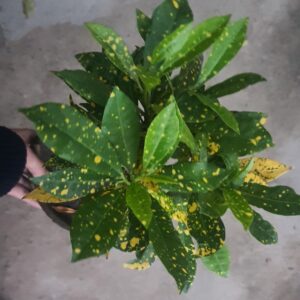Ponytail Palm The Elegant Desert Survivor
Despite its name and appearance, the Ponytail Palm (Beaucarnea recurvata) is not a true palm—it’s actually a member of the Asparagus family and closely related to agaves. Known for its bulbous trunk (used for water storage) and long, curly, ribbon-like leaves that resemble a ponytail, it’s one of the most charming and fuss-free indoor or patio plants.
Native to eastern Mexico, the Ponytail Palm thrives in dry, warm conditions and is perfect for busy gardeners, beginners, and even those who occasionally forget to water their plants.
🌿 General Description
Botanical name: Beaucarnea recurvata
Common names: Ponytail Palm, Elephant Foot Tree, Bottle Palm
Plant type: Succulent (not a true palm)
Height: 3–6 feet indoors; up to 20 feet outdoors in warm climates
Trunk: Swollen base (caudex) that stores water
Leaves: Long, narrow, green leaves that cascade like a fountain
Lifespan: Can live for decades with proper care
☀️ Light and Temperature Needs
Light:
Thrives in bright, indirect light to full sun
Can tolerate medium light but grows slowly
Outdoors, prefers filtered sun or full morning sun
Temperature:
Ideal range: 18–30°C (65–86°F)
Tolerates brief dips to 5°C (41°F), but not frost-hardy
USDA zones: 9–11 (bring indoors in colder regions)
🌞 More sunlight = stronger growth, tighter leaf clusters, and better leaf color.
💧 Watering Routine
One of the biggest mistakes with Ponytail Palm is overwatering. This plant is drought-tolerant and prefers to stay dry.
Water schedule:
Spring/Summer: Water every 2–3 weeks
Fall/Winter: Water once every 4–5 weeks
How to water:
Allow soil to completely dry between waterings
Water deeply, then drain excess
Avoid letting water sit in the pot or around the caudex
⚠️ Signs of overwatering: Soft or mushy trunk, yellowing leaves, root rot
⚠️ Signs of underwatering: Crispy brown leaf tips (but this is usually harmless)
🌱 Soil and Fertilizer Needs
Soil:
Use a well-draining succulent or cactus mix
Mix regular potting soil with sand or perlite for better drainage
Fertilizer:
Apply a balanced, diluted liquid fertilizer (e.g., 10-10-10) once every 2–3 months during growing season (spring to fall)
Skip feeding in winter
🌿 Too much fertilizer can lead to leggy growth and leaf burn. Less is more!
✂️ Pruning and Maintenance
Minimal pruning needed
Remove:
Dead or damaged leaves at the base
Occasional browning tips (can be trimmed neatly)
Leaf curling is normal and part of the plant’s aesthetic
🪴 Turn the plant every few weeks for even growth if kept indoors.
🌿 Propagation
Offsets (pups):
Mature plants may develop small pups around the base
Carefully remove with a clean knife and allow the base to dry
Plant in small pots with succulent mix and water sparingly until rooted
Seeds:
Possible but very slow and uncommon
🌱 Pups are the easiest and fastest way to get more plants.
🐛 Pests and Diseases
Generally pest-free, but may rarely attract:
Spider mites, mealybugs, or scale insects
Root rot if overwatered
🛡️ Use neem oil or insecticidal soap for pests.
Ensure well-draining soil and moderate watering to prevent rot.
🏡 Decor and Landscape Use
Indoors:
Perfect for modern, boho, or minimalist spaces
Looks great in corners, entryways, and near sunny windows
Outdoors:
Great patio plant in containers
Can be planted directly in ground in hot, dry climates
🌴 Pairs well with succulents, agaves, and snake plants in a desert-style garden.
✅ Conclusion
The Ponytail Palm is a perfect combination of low maintenance, style, and longevity. Its unique appearance, water-saving nature, and resilience make it ideal for people who want a set-it-and-forget-it kind of plant. With just occasional watering, bright light, and minimal fuss, this plant will thrive and remain a graceful, sculptural presence in your home or garden for years.
“





Reviews
There are no reviews yet.